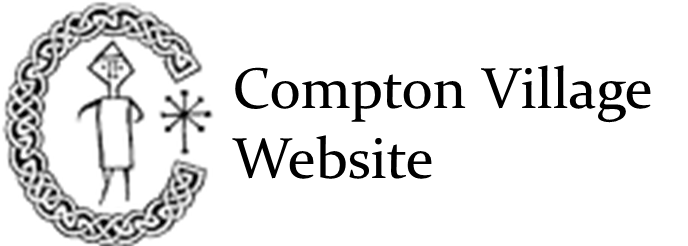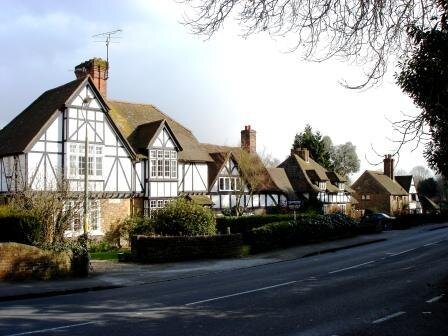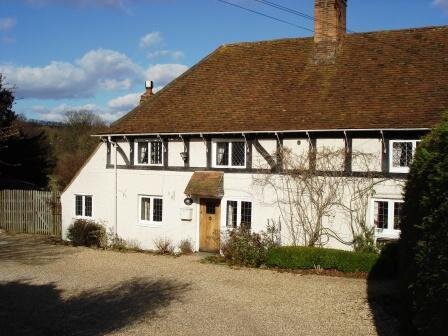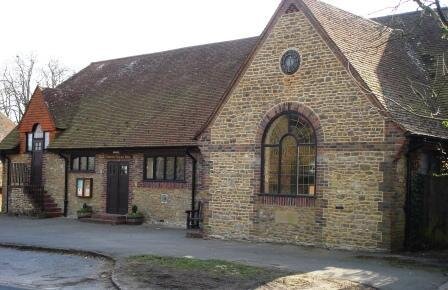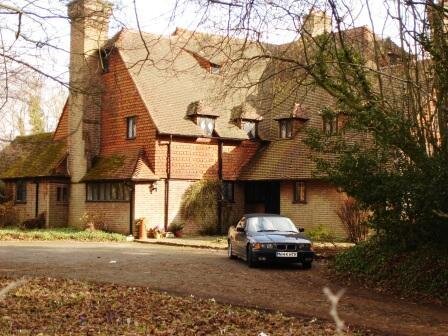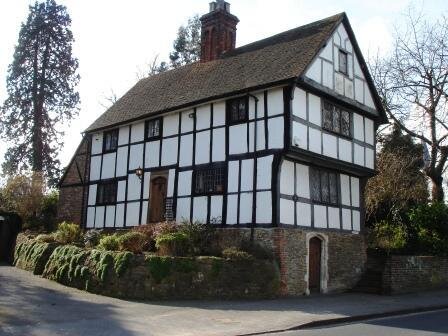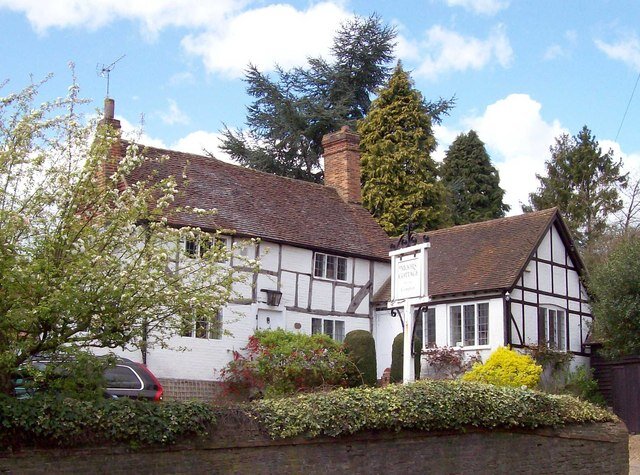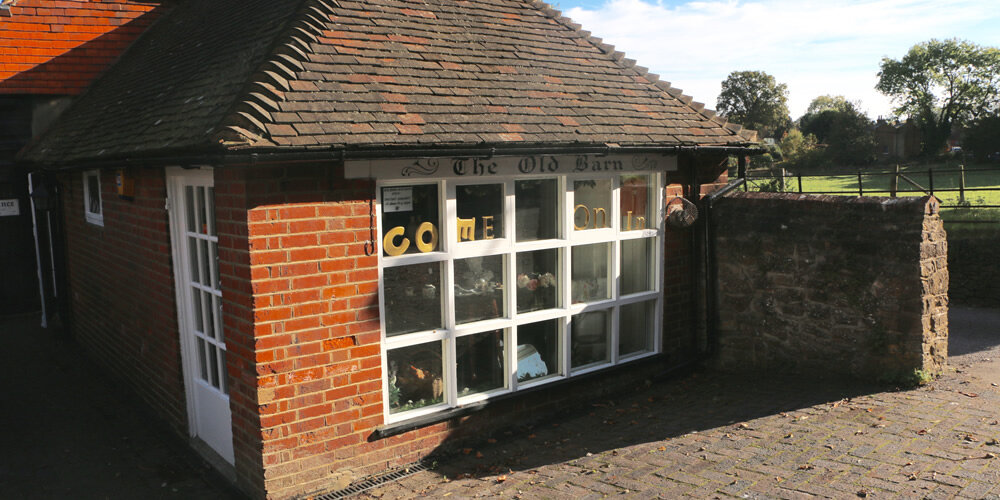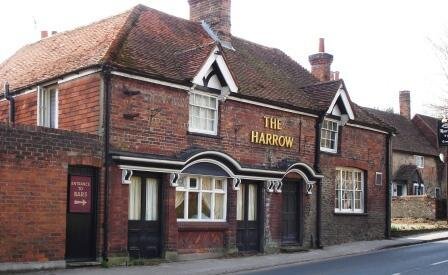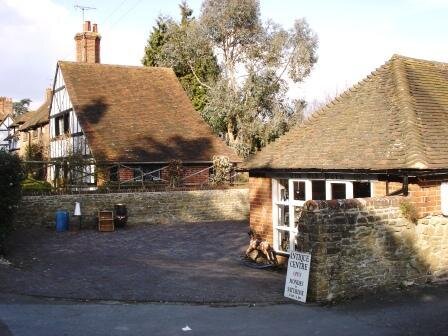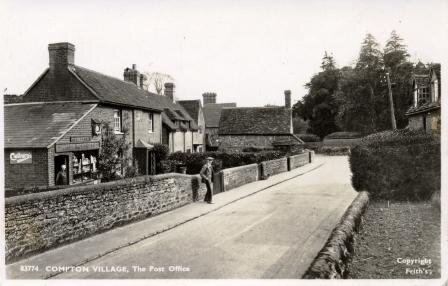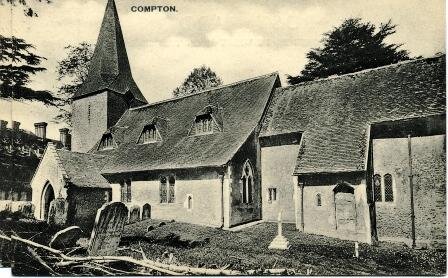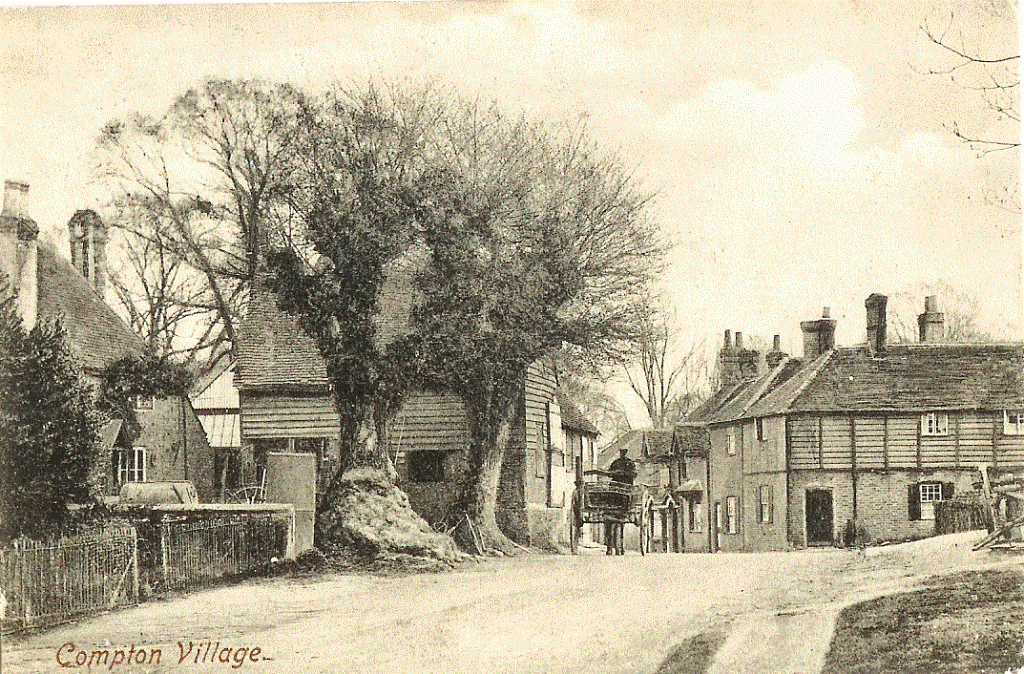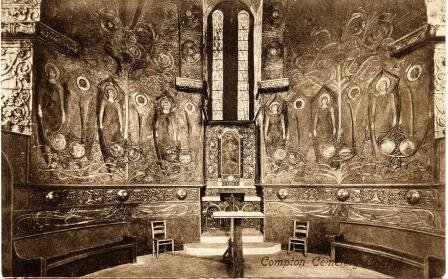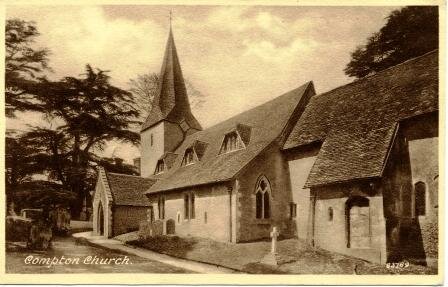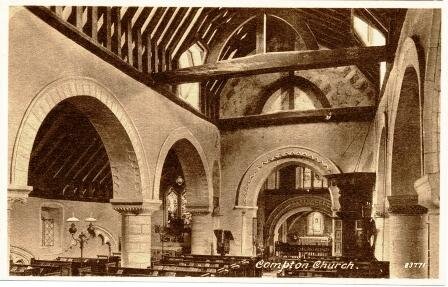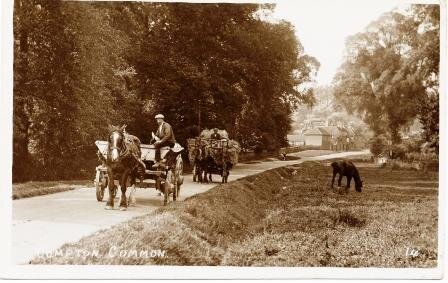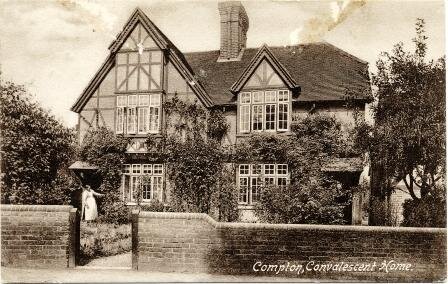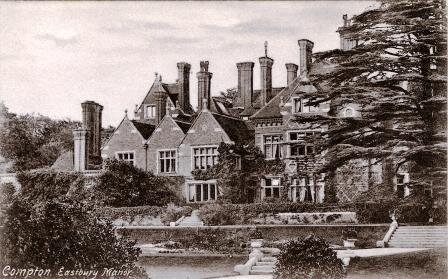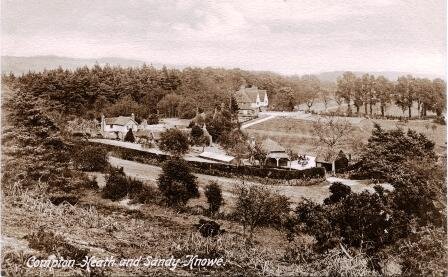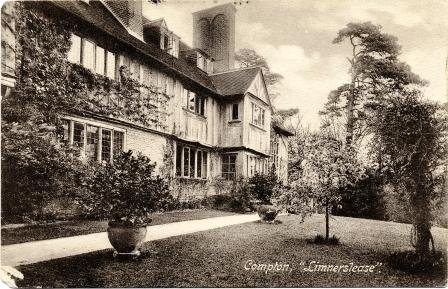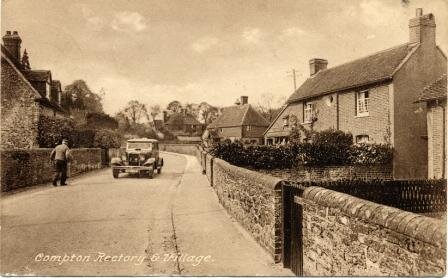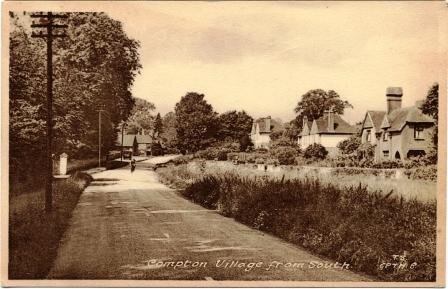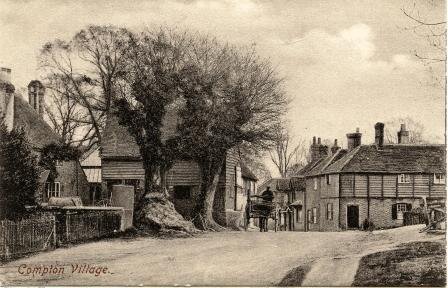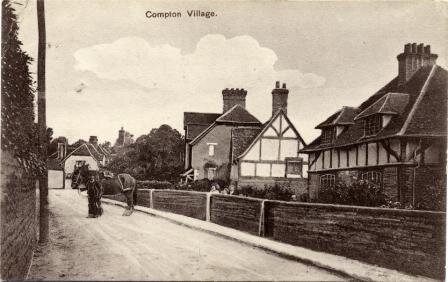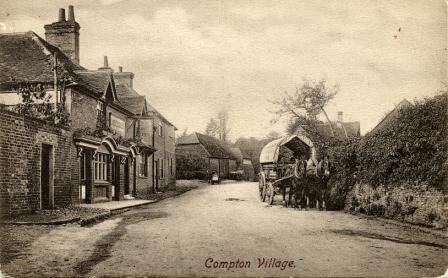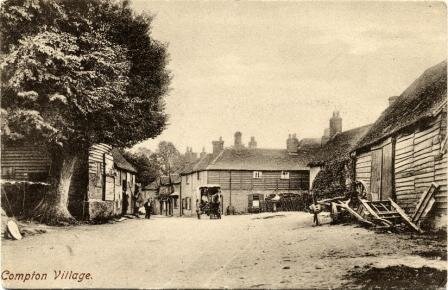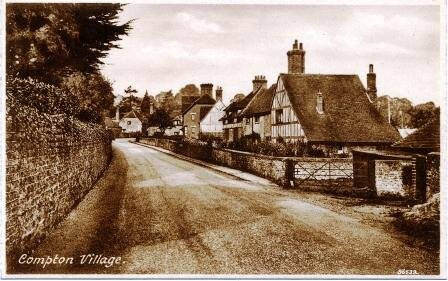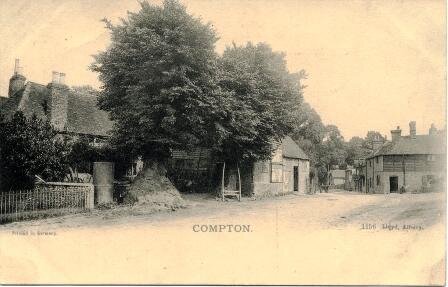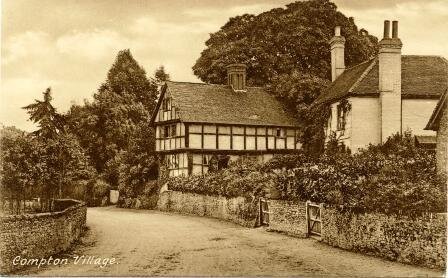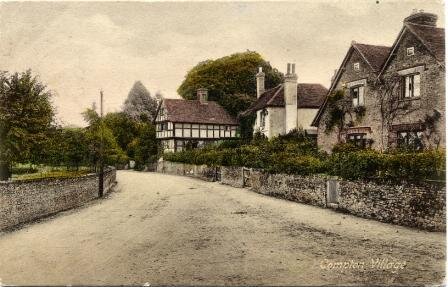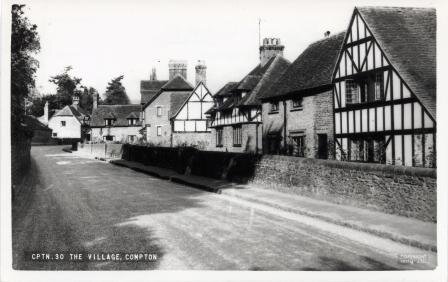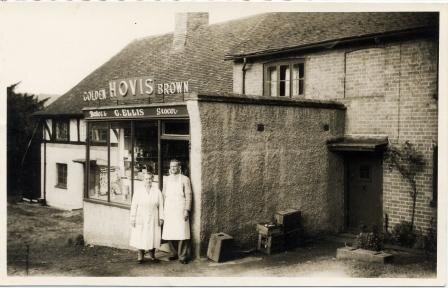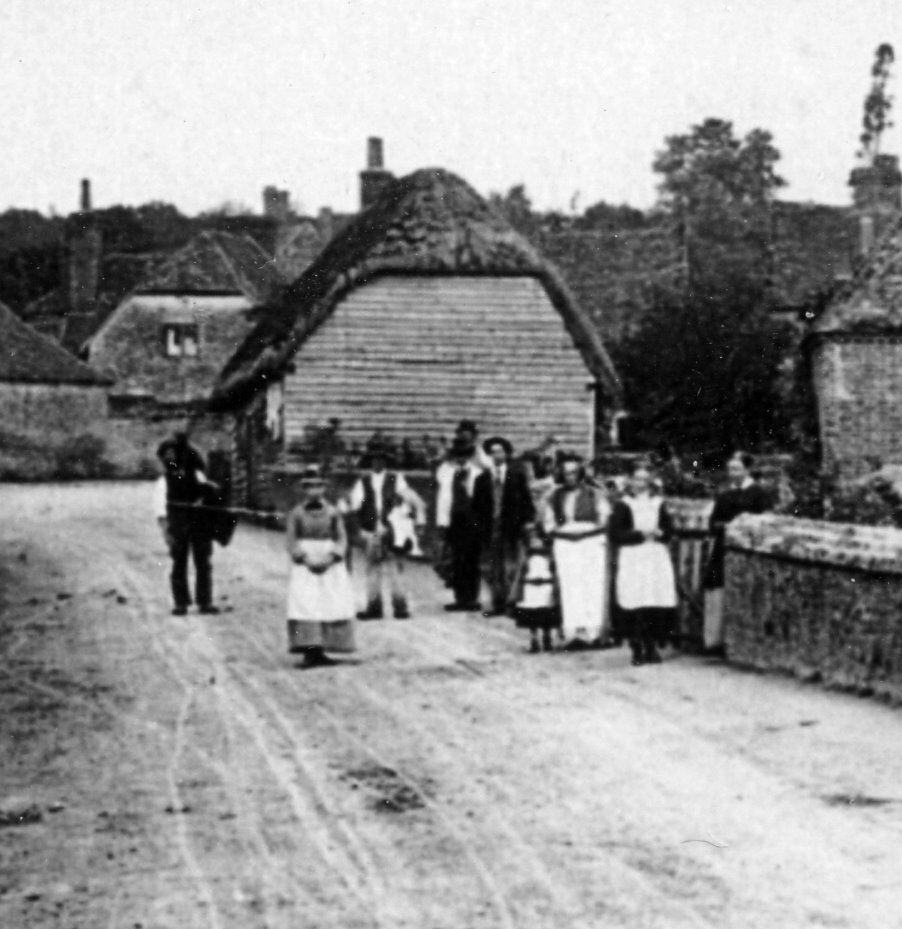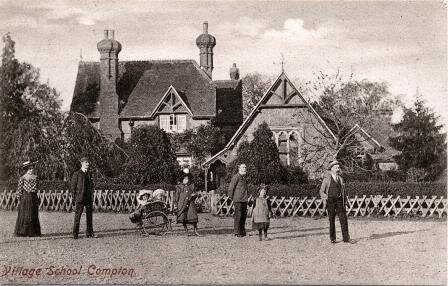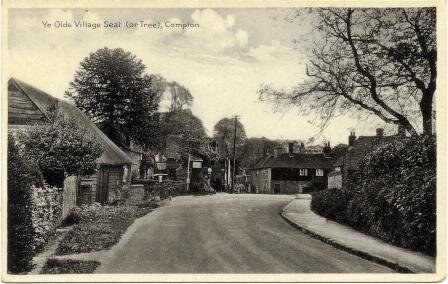Compton History
The last 50 -100 years have seen significant changes in village life throughout the UK and Compton is no exception. Thanks to a conservation order, Compton has retained much of its character
There are 31 listed buildings in Compton
Compton Map 1760
Many are included in the slide show above, although not all and every house has a story! Until 1913, the rector lived at the Grange, in the Avenue. In 1913, the Terry's bought the Grange and the Rector moved to the new Arts & Crafts house that remained the Rectory until very recently. Planning permission now exists to build another new house in the grounds of the Rectory, which will become the new abode for our Priest in Charge.
Moors Cottage was once a Coffee House and serve refreshments to the many visitors that frequented Watts Gallery and visited the Wattses. It originates from 17thC and possibly earlier. Cypress Farm originates from 16thC as does Mission Cottage.
The map on the right is from 1760 and shows that whilst many of the houses in Compton have since been replaced, their origins go back a long way.
If you look at Compton from the Compton heights in Down Lane or the ridge that runs parallel to Priorsfield Road, you can see that Compton is in a valley. Before the introduction of drainage, this meant substantial areas were marshy and we can see that today in old place names.
Withies Lane and Polsted Lane have watery derivatives, as Withies or reeds grew near water and Polsted is thought to come from 'Pool' sted. We also have Waterhaw Cottage and Island House, and in 1760, we can see that the Southern section of the village was referred to as Compton Marsh.
The Old Post Office Stores stopped trading as a Post Office in 1986. It was an Antiques Shop for a period before becoming a residential property in 1995. There are currently 2 Public Houses in Compton but over the years there were others. White Hart Cottage was a pub which was known by a variety of names. Brook House was built on the site of a pub called 'The Bear' and the site that now houses Rustic Antiques and the Lynhams was formerly a pub called Aum Outlett.
The village school was closed in 1975 and is now a residential property. The 'Old Congregational Church' is also residential, it's origins stemming from the non-conformist movement during last Century, when Mrs Watts laid the foundation stone there, as she did at the village hall.
In 1809 there were two cottages in between Poplar Cottage and the Old School House (on the common). The landlord, Joseph Hollis, lived in the cottage on the right (both since demolished) and his tenant, John Cooper lived next door with his Mother and a child. It was said that Mr Hollis wasn't particularly popular as he flaunted his money and when he increased the rent and threatened eviction the tenant planned his demise! Amongst the witnesses was one Thomas Whitelaw, the proprietor at the Harrow. The trial took place in August at Guildford, both Cooper and his Mother Mary were charged, but Mary confessed to her Son's guilt and was therefore declared not guilty.
As is the case with many of the cottages in Compton, South Cottage has been subject to a considerable number of changes over the years.
House Histories informs us that the cottage was referred to in 1517 where Westbury Manor records showed that the tennent 'Catherine Wheeler' had died, leaving the property in the care of David Evan, guardian to her son John, until he came of age. A dispute was later recorded, over the ownership of the property which eventually went to her son, John.
Between that time ( reign of Henry VIII) and the present day, the house has fallen into disrepair, been subject to rebuild and been changed from cottages to a single dwelling. The Stovold family remained tennents for approximately 350 years and in the early 19th century the property became part of the Eastbury Estate until it was sold in 1963, along with many of the ' tied cottages' linked to the Estate.
Information and image linked to South Cottage, reproduced with kind permission from Philip & Sally Gorton.
To find out about YOUR house contact www.house-history-research.co.uk or email house.history@btinternet.com
South Cottage - 1880. During 1890's it was known by theTudor name ' Barber's'
Until 1913, the rector lived at the Grange, in the Avenue. In 1913, the Terry's bought the Grange and the Rector moved to the new Arts & Crafts house that remained the Rectory until very recently. Planning permission now exists to build another new house in the grounds of the Rectory, which will become the new abode for our Priest in Charge.
Historic Dates
| 1809 | Joseph Hollis found stabbed in his kitchen. The neighbour’s knife was found on the kitchen floor and hence he was hanged for murder. His name was John Cooper and they lived in the 2 cottages situated between Poplar Cottage & the School House (now demolished) |
| 1894 | First Compton Parish Council |
| 1890s-1904 | Wattses are prolific in Compton. Limnerslease, new Cemetery & Chapel, Pottery, new houses are built for potters and Watts staff Oak Cottages, Withies Lane, Down Hollow, Brixbury Cottage Dairy, Wistaria, April & Primrose Cottage built. |
| 1901 | Death of Queen Victoria & Coronation of Edward VII |
| 1904 | Death of GF Watts |
| 1914-18 | WW1– death of 11 local men |
| Introduction of longest serving Council members -Frank George Norris, Sydney How & Albert Frederick Jackson to Compton PC. | |
| 1929 | New Congregational Church built. New housing development at Fowlers Croft |
| 1934 | Village Hall is built & Major Rudkin compiles Album. |
| This can be downloaded HERE It is 77MB and may take a few seconds or minutes to download | 1935 | Silver Jubilee – King George V & Queen Mary |
| 1936 | WW2 – Death of Hugh Jupp’s son, Thomas. |
| 1938 | Death of Mary Watts |
| 1948 | Death of Major Rudkin & his wife |
| 1953 | Coronation of Queen Elizabeth II |
| 1950s | New housing development at Almsgate |
| Many large new houses built at Priorsfield & Down Lane | |
| Closure of Compton Pottery | |
| 1960s | Development of new housing at Spiceall |
| Proliferation of female Parish Councillors | |
| Sale of Eastbury Estate properties | |
| 1970s | Widening of B3000 |
| 2008/9 | Village Club is rebuilt plus 4 new houses |
| 2013/2014 | Watts Gallery & Parish Council enter into a long term management agreement |
| 1912-2014 | 2 large houses built, one opposite the Harrow & one in the Avenue |
